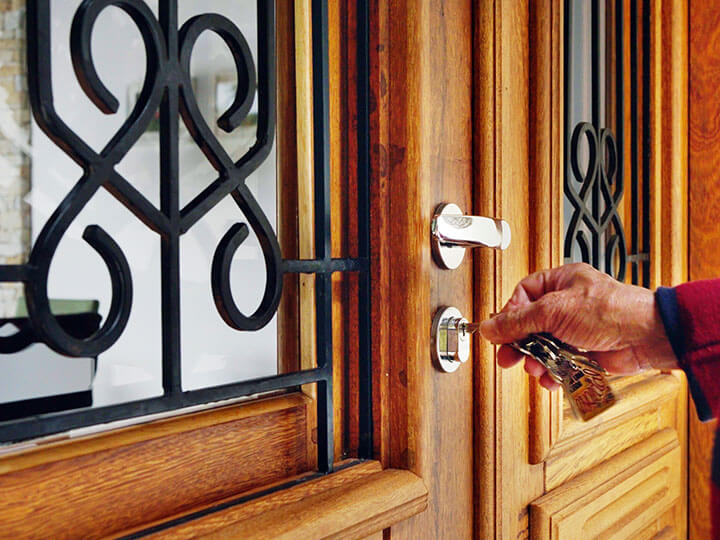EN 179: Building hardware - Emergency exit devices operated by a lever handle or push pad, for use on escape routes - Requirements and test methods
Standard: EN 179: Building hardware - Emergency exit devices operated by a lever handle or push pad, for use on escape routes - Requirements and test methods.
Certification: CE Marking
A emergency exit devices operated by a lever handle or push pad should meet the requirements as described in the standard EN 179, which is a harmonized standard under the Construction Products Regulation (EU) 305/2011.
Scope: This European Standard specifies requirements for the manufacture, performance and testing of emergency exit devices mechanically operated by either a lever handle or a push pad for the purpose of achieving a safe exit under an emergency situation on escape routes.
The suitability of an emergency exit device for use on smoke/fire-resisting door assemblies is determined by fire performance tests conducted in addition to the performance tests required by this European Standard.
This European Standard covers emergency exit devices, which are either manufactured and placed on the market in their entirety by one producer, or produced by more than one producer and subsequently placed on the market as a kit in a single transaction.
Applicable Products:
- Emergency exit devices designed to be used in emergency situations, where people are familiar with the exit and its hardware and therefore a panic situation is most unlikely to develop
- Emergency exit devices for use on hinged or pivoted door leaves only
- range of emergency exit devices including those for use on double doorsets
- Two specific types of operation: emergency exit devices with “lever handle” operation, type A; and emergency exit devices with “push pad” operation, type B.
- Two categories of emergency exit device projection in order to maximize the width of the escape route, and minimize the projection from the door face where either or both of these criteria are of importance
- Exceptional case of emergency exit devices intended for use on single leaf inwardly opening exit doors. It is assumed throughout this European Standard that emergency exit doors generally open towards the outside in order to assure safe escape. However, there are cases such as hospital or hotel bedroom doors, classroom doors, etc. where local building regulations allow, by way of exception, the exit door to open against the direction of exit
- Double doorset emergency exit devices of which the first opening leaf is equipped with a panic exit device conforming to EN 1125 and the second opening leaf is equipped with an emergency exit device conforming to EN 179. It is essential that this combination undergoes an additional test for approval
This European Standard does not cover the following:
- Any particular design of emergency exit devices and only such dimensions as are required for safety reasons are specified
- Specific emergency exit devices intended for use on inwardly opening double doorsets
- Specific emergency exit devices intended for use by the severely disabled (due to the wide range of disabilities, such emergency exit devices and their performances should be agreed between specifier and producer)
- Panic exit devices operated by a horizontal bar (see EN 1125) or electrically controlled panic exit systems or electrically controlled exit systems (see prEN 13633 and EN 13637)
Related Standards: The following referenced documents are indispensable for the application of this document.
- EN 1125: Building hardware - Panic exit devices operated by a horizontal bar, for use on escape routes - Requirements and test methods.
- EN 13241: Industrial, commercial, garage doors and gates - Product standard, performance characteristics.
- EN 14351-1: Windows and doors - Product standard, performance characteristics - Part 1: Windows and external pedestrian doorsets.
- EN 16034: Pedestrian doorsets, industrial, commercial, garage doors and openable windows - Product standard, performance characteristics - Fire resisting and/or smoke control characteristics.
- EN 1634-1: Fire resistance and smoke control tests for door and shutter assemblies, openable windows and elements of building hardware - Part 1: Fire resistance test for door and shutter assemblies and openable windows.
- EN 1634-3: Fire resistance and smoke control tests for door and shutter assemblies, openable windows and elements of building hardware - Part 3: Smoke control test for door and shutter assemblies.
You may be interested in...
Intertek has a complete range of testing methods and capabilities to ensure your doors, frames, hardware and window products get to market quickly and efficiently.
Knowledge Center
Building Health & Wellness: An Overview of Services
Acoustical Testing & Consulting Resources
Remote Pre Inspections for NFPA 80 / 101
Protek - Safety. Everywhere. Every Day
Fire Doors 101: Your Guide to Testing and Certification - Webinar Recording
Tornado Testing & Certification Requirements - Webinar Recording
Plumbing Products Testing & Certification - Webinar Recording
The Evolving Code Evaluation Process White Paper
Proposition 65 & the Furniture Industry Webinar Recording
Why Planning for FCC Certification is Key to Success in the Door Hardware Industry White Paper

Upcoming Tradeshows & Events
Resources
- Search and Buy Building & Construction Standards
- SpecDirect
- Building Products Directory
- Project Connect (formerly myATI) – B&C Products
- Construction Hive – B&C Projects (PSIQest)
- My TestCentral

